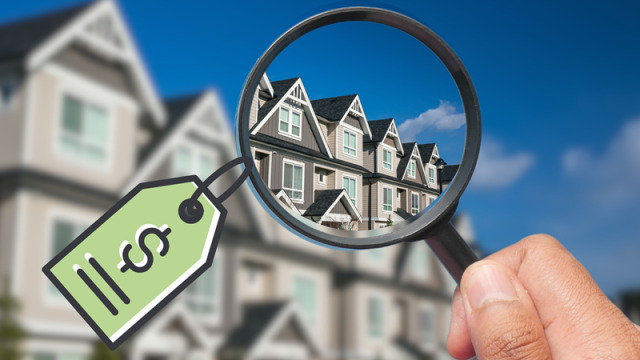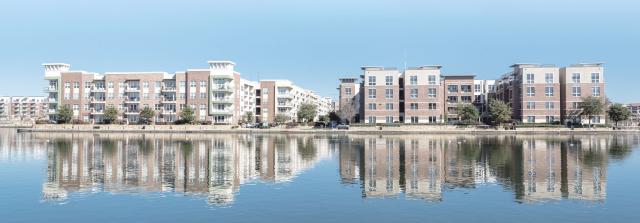webinar

For Apartment Communities, It’s Time to Win
Consumers care more about their time than ever before. It’s time to capitalize on that.
Today, we all care about time more than ever. We learned during the pandemic that anything can happen. Tomorrow is not a guarantee. So now, we give greater value to our time.
New York Times best-selling author Jay Baer, who recently published his latest book, “The Time to Win,” spoke to this trend and how to capitalize on it in the February Apartmentology webinar.
He explained techniques that apartment communities — or any businesses — can apply to prospective and current customers that will do wonders for their reputations and performance. Apartment operators are in the perfect position to drive revenue and satisfaction by acknowledging their residents and prospective residents craving for timeliness.
Speed is more important than price
There are 1,440 minutes per day. That won’t change. You can’t earn, buy, or steal more time. So, people are more focused than ever on how that time is used, Baer said.
So many of today’s trendy behaviors — quiet quitting, business-leisure travel — are all really the same trend: It’s that “Our time is more important to us than anything,” he said.
This translates to where we live and where we move to, including when conducting an apartment search.
Studies show that two-thirds of consumers say speed is more important than price.
“That is extraordinary,” Baer said.
Businesses that figure out how to save their customers time gain a competitive advantage. Consider how often you see ASAP — NOW — ON THE RUN, for example, as part of marketing messaging.
Faster responsiveness will create more revenue, Baer said. “If you give residents time, they will give you money. But if you cost residents time, it will cost you money. By working at the appropriate speed, you will get more residents and keep more residents.”
The amount of time that an apartment seeker uses to find and lease their next apartment has gone down 30 percent since we came out of the pandemic in 2022, Apartments.com data show.
“We’re making decisions faster because taking longer to do so is a waste of time,” Baer said.
However, Apartments.com found that 50 percent of prospective renters do not hear back from the community within three days. This is lost business because:
- Six in 10 renters submit only one email inquiry (they don’t make multiple attempts through multiple channels).
- Seven in 10 renters submit only one phone inquiry.
And once they do contact the apartment community, they are likely two-thirds of the way to being sold. So, to not get back to them is detrimental, he said. You lose their business. In general:
- 91% of customers using phones expect to be heard back from within 24 hours.
- 82% of customers using email expect to be heard back from within 24 hours.
- 66% of customers using a “contact us form” expect to be heard back from within 24 hours.
And yet, Apartments.com finds that only 29 percent of leads are answered within 24 hours.
“That is a massive gap of what your customers expect compared to reality,” Baer said.
Speeding up service is easy to do
Baer said that speed is the most important element of customer service — and it’s also the thing that companies can do the most about and is easiest for them to fix.
“Yes, you can change your price, but that has ramifications,” Baer said. “Baggage goes with it.”
Or, “You can be nice to people, but given your large audience of renters, it can be tough to deliver that consistently,” he said.
A longstanding business philosophy is to provide “Good. Fast. Cheap.” It’s said companies can succeed if their product or service can deliver any two of those.
“But that’s no longer the case today because being fast is required,” he said. “If you aren’t fast, you fall way behind in your competitive set.”
A speedy response shows you care
Today, Baer said consumers interpret speed to mean the company is caring. He spoke about his experience soliciting three bids for a home painting job. One got back to him in 4 hours, another the next day, and the third after three days.
“The one that comes in soonest is often what we choose because you feel like that bidder got back to you more quickly and therefore is more caring,” he said.
Baer said he chose the four-hour response despite it being the most expensive bid.
Of those bidders he didn’t choose, “I’m thinking: if they take that long to get back to me before they have my money, how long will it take for them to get back to me when they do have my money,” Baer said.
Half of customers today will not wait longer than 3 minutes on a website or at a store, he said. Customers never say, “Oh, it’s okay, you can do it slower.”
Incredibly, companies can’t detect when they are losing business based on speed, he said. There are no data for this. Companies will almost always believe they lost on a bid because of price, not knowing that they actually lost on speed, he said.
But customers’ decisions are almost never based on price, he said. Instead, those losing bidders will keep dropping their prices because they assume they were outbid.
“They may cut it and cut it again — and after about four reductions, the customer chooses them because they cannot afford not to,” he said. “But by then, that business has now lost all its profit.” Think about that when you decide to drop rents.
Speed at all costs … costs the company, Baer said. “There is a perfect amount of elapsed time for every customer interaction. The ‘Goldilocks’ amount; or the “Right” now,” he said.
Baer said companies are rewarded when responding “a little faster than what the customer expected.” Hitting on that amount generates customer satisfaction and trust. If a company responds too fast, it reduces trust because doing so throws up a red flag and creates doubt and even fear for their customers.
Having an inconsistent response rate is tricky. Instead, Baer said, it’s best to be pretty fast consistently rather than be sometimes really fast and other times really slow.
The 6-step framework to winning time
In “The Time to Win,” Baer lays out the framework for success:
1. Perform a “got it” audit. Calculate how long it takes for your company, on average, to do a certain thing. You can’t simply measure it anecdotally. Study your methods and measure them. How long does it take to find out information about your properties? Schedule a tour? Be presented with a rental agreement? Get questions answered? Get maintenance help?
2. Address questions before they are asked. The fastest way to answer a question is to make sure no one must ask the question. In apartment management, you all know the 25 or so most often-asked questions from prospective residents. How many of you provide those answers up front to the customer? Be proactive about it. It makes the entire process for your prospects go so much faster.
3. Answer the question even if you don’t have the answer. It’s as simple as replying, “I’ll get back to you.” By acknowledging the question, it takes the anxiety out of customers waiting, wondering, wanting answers.
4. Set expectations. Realistic, expressed expectations are more important than raw speed. “Customer experience” is just a buzzword. What you really mean is the difference between the customer’s expectations and the reality of how the company delivers on them, according to Baer, who added that 83 percent of customers expect businesses to be as fast or faster than they were before the pandemic. There are no more excuses — no “pandemic pass” for delays. Under-promising and over-delivering still works. It’s all about setting expectations.
5. Close uncertainty gaps. Do you know more about what’s going on in your business than the customer does? That’s not good. Compare how pre-Uber you called a cab and waited for it to arrive. You didn’t know what kind of cab would show up, or when it would arrive, how much it would cost, or how long it would take to reach your destination. With Uber, you know all of that plus the driver’s name, license plate number, and what they look like. It’s the same with Domino’s pizza tracker. It takes the same amount of time for them to make and deliver the pizza, but their customers are happier because they can track the incremental progress of the process.
6. Offer a fast pass. One in four customers will pay 50 percent more for immediate service — or not have to wait. Any business can do this. And by charging a fee for it, it’s pure profit. You don’t have to do anything on your end other than to rearrange your customer workflow. Not all your customers will want it, but those who do, want it badly. Find a way to offer it.
Companies that move at the right, speedy pace will win the day — and the customer — in whatever industry they belong.







